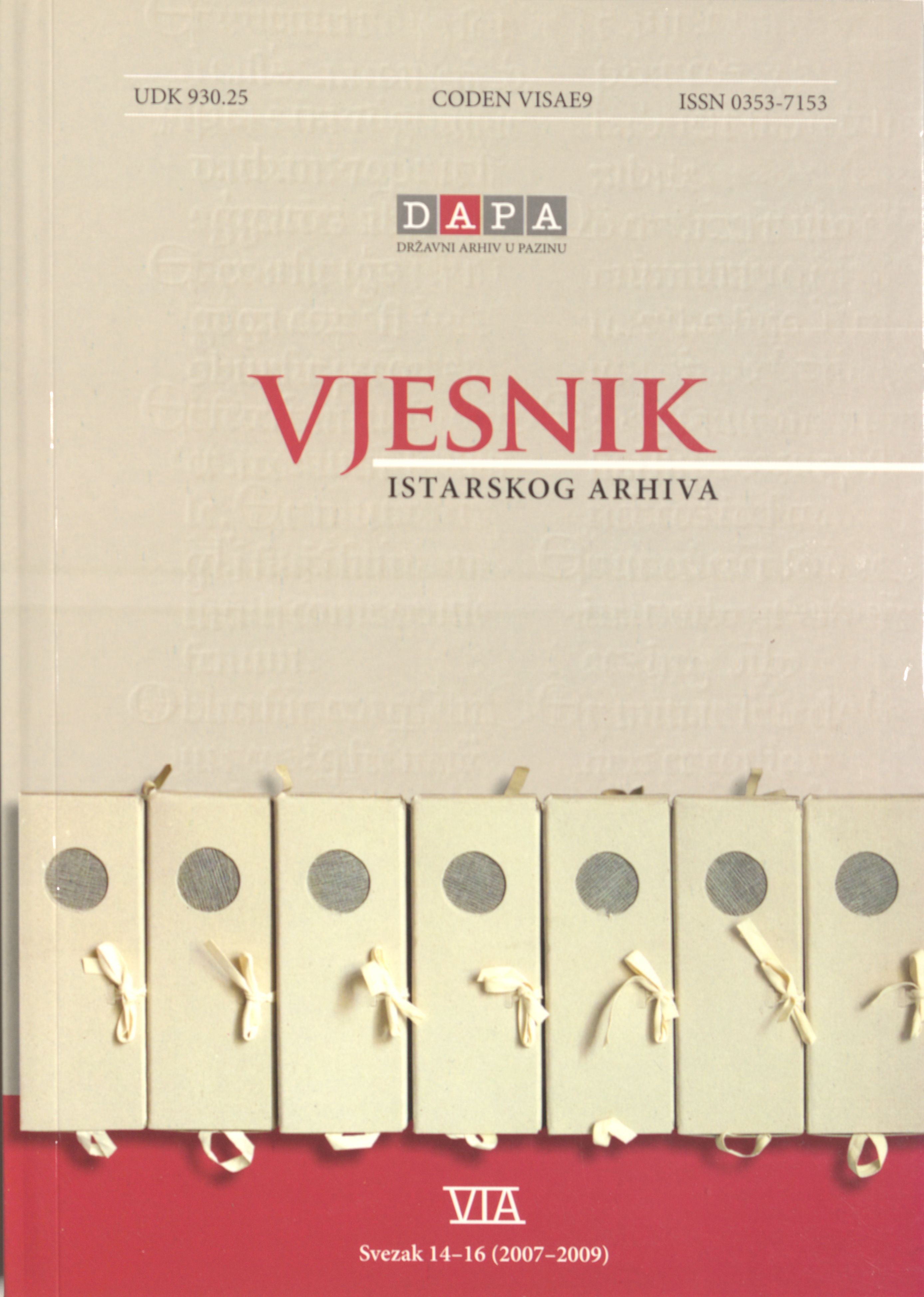Lawsuit Between Captain Christopher Moškon and the Inhabitants of the County of Pazin Based on Court Records from May 1 1545
Keywords:
Moškon, lawsuit, County of Pazin, zatke, župani, taxes, usurpations, colonizationAbstract
The history of the County of Pazin is characterized by numerous changes at the top of its power structure. Ever since it came under Habsburg rule in 1374, there is a long period of absence of its feudal overlord. Actual power was exercised in his stead by captains who either rent the County from year to year, or buy it conditionally (with the possibility of a Habsburg buyback). The Moškon (It. Mosconi, Ger. Muschkon, Muschkhann) family was the first that opted for this second option and they held on to power from 1532 until 1558. Originally merchants from Bergamo, Alexius Moškon and his son Christopher counted on the possibility that this conditional purchase would eventually become permanent and pave the way for their ascension to the rank of nobility. The inhabitants of the County enjoyed numerous customary privileges, chief of which being the right of each community to elect their local representative, the župan. During his term in office, which was limited to one year, the župan was in charge of various administrative tasks within the community and he also defended its interests before the captain or the central government. In addition to local autonomy, the duties and taxes in the County were strictly regulated by means of rent-rolls. Christopher Moškon, who wanted to increase his power without regard for these privileges, ended up being the target of a lawsuit by the united representatives of all of the communities of the County sometime before the middle of 1544. A special commission was designated by the king to addressing these charges and grievances brought up by the subjects. After a year’s time and several interim solutions, the final verdict, kept today in the State Archives of Venice was reached on May 1 1545. It consists of 66 articles (9 are missing) and represents a source of immense value, not only for this particular event, but also for various political, social and economic aspects of life in the County of Pazin in the sixteenth century. Christopher Moškon was found guilty of most charges which included: introduction of previously unknown taxes, illegal use of labor the peasants owed their feudal overlord – the king, usurpation of land, fines, and postal services and so on. Moškon also interfered heavily in the autonomy of local communities by exploiting his right to confirm elected officials. Instead of confirming whoever it was the locals elected, he would arbitrarily decide who was to occupy these positions – often for money – the rights and privileges of the locals notwithstanding. By doing this he meant to establish a network of loyal and dependent servants thereby greatly increasing his personal power and influence in the County. Threatened in their rights, the inhabitants, themselves no strangers even to armed resistance, managed to defend themselves from Moškon before a court of law. However, the lawsuit’s relevance does not end there. While addressing the complaints, the royal commission touched on a number of topics that shed light on various aspects of political, social and economic life in the County. They describe the procedure on how to elect the župan and other officials, the jurisdiction from the lowest level to the highest court of appeal, punishments, incarceration rules; they also deal with problems of colonization, including a few particular cases thereof, regulate taxes, duties, imports, and pasture leasing and so on. One also finds pieces of information on the zatke the specifically Istrian legal and economic term, the exact meaning of which is as of yet not fully clear and more. The lawsuit between Christopher Moškon is not merely a testimony to the endurance of the inhabitants of Istria in the defense of their ancestral privileges, but also a valuable source of information for a number of aspects of life in Austrian Istria.
Downloads
Published
Issue
Section
License

This work is licensed under a Creative Commons Attribution-NonCommercial 4.0 International License.

